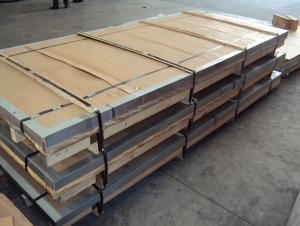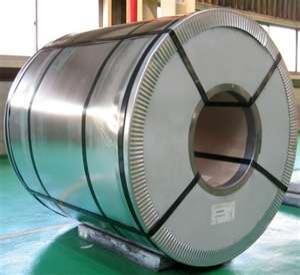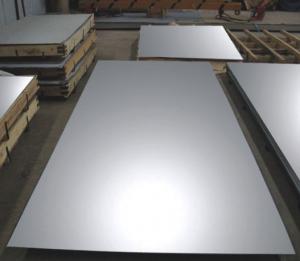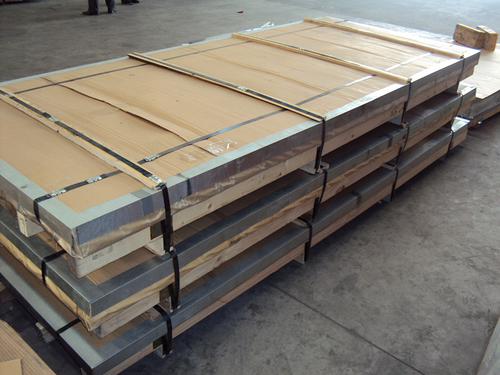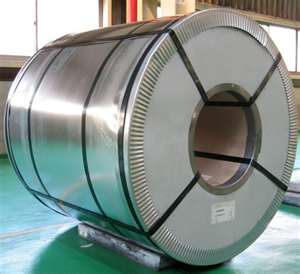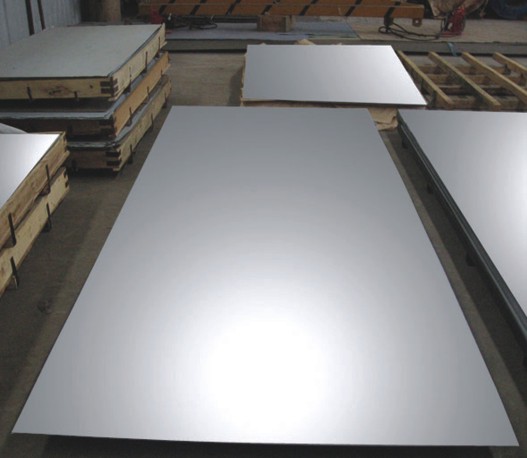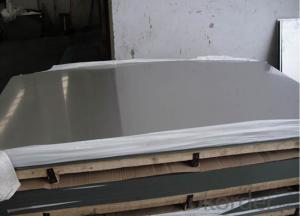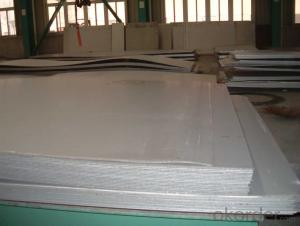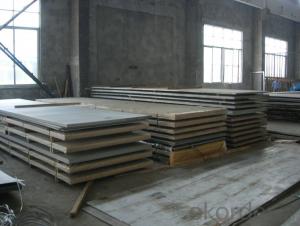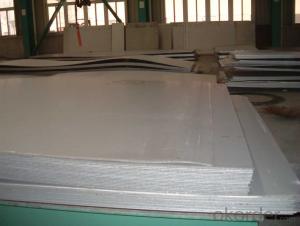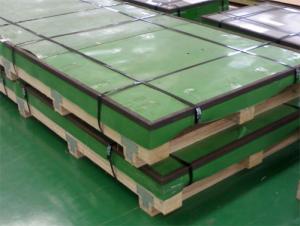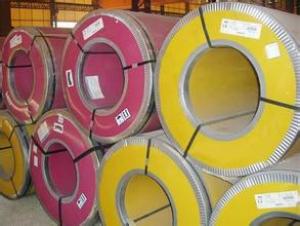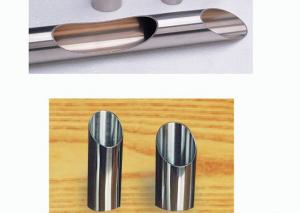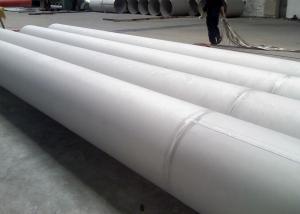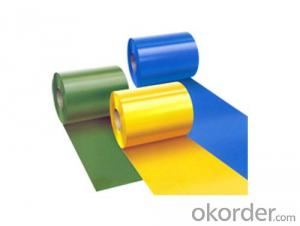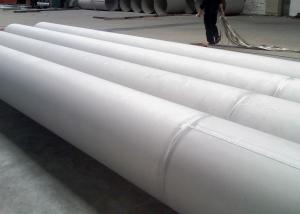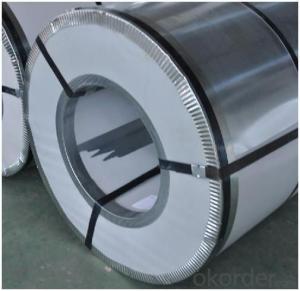Stainless Steel Sheet 4K Surface Treatment 0.9mmx1220mmx2440mm
- Loading Port:
- Shanghai
- Payment Terms:
- TT OR LC
- Min Order Qty:
- 25 m.t.
- Supply Capability:
- 2500 m.t./month
OKorder Service Pledge
OKorder Financial Service
You Might Also Like
Product Introduction ofStainless Steel Sheet 4K Surface Treatment 0.9mmx1220mmx2440mm:
Our Stainless Steel products including the stainless steel sheet/plate, stainless steel coil, stainless steel rod/bar, stainless steel angle, stainless steel strip, stainless steel flat, carbon steel products and alloy steel materials. It also can supply the processing of surface, like No.4, BA, HL, SB, 8K, and so on.
Loading Quantity of Stainless Steel Sheet 4K Surface Treatment 0.9mmx1220mmx2440mm:
25 Tons/20FCL.
Grade of Stainless Steel Sheet 4K Surface Treatment 0.9mmx1220mmx2440mm:
201, 306, 316 Etc.
Delivery Time of Stainless Steel Sheet 4K Surface Treatment 0.9mmx1220mmx2440mm:
20 days Per Container.
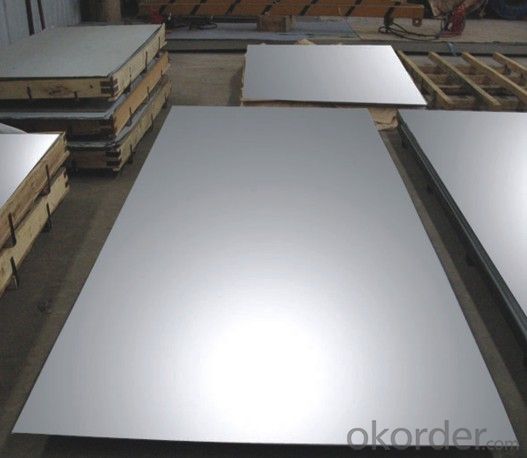

Application of Stainless Steel Sheet 4K Surface Treatment 0.9mmx1220mmx2440mm:
| Finish | Thickness | Characteristics | Applications |
| No. 1 | 3.0mm~50.0mm | Finished by hot-rolling, annealing and pickling, characterized by white pickled surface | Chemical industry equipment, Industrial tanks |
| No. 2B | 0.3mm~6.0mm | Finished by heat treatment, pickling after cold rolling, followed by skin pass line to be more brighter and smooth surface | General Application Medical Instruments,Tableware |
| No. BA (Bright Annealed) | 0.5mm~2.0mm | Bright heat treatment after cold rolling | Kitchen utensil, kitchen ware,architectural purpose |
| No. 4 | 0.4mm~3.0mm | Polishing with No. 150 to No.180 mesh abrasivesThe most popular finishes | Milk & Food processing acilities, Hospital Equipment, Bath-tub |
| HL(Hair Line) | 0.4mm~3.0mm | Finished by continuous linear polishing | Architectural purposes, escalators, kitchen ware vehicles |
FAQ
Q: CAN YOU PROVIDE MILL TEST CERTIFICATE?
A: YES! Mill Test Certificate for Stainless Steel Sheet 4K Surface Treatment 0.9mmx1220mmx2440mm are available.
Q: CAN YOU MAKE DDQ (DEEP DRAWING QUALITY)?
A: YES. Our material has been widely used for producing Stainless Steel Pots and Stainless Steel Sinks, which have strict request for good deep drawing quality.
Q: HOW TO GET A SAMPLE?
A: FREE samples for Stainless Steel Sheet 4K Surface Treatment 0.9mmx1220mmx2440mm are available for your checking and testing. And to get free samples, you need to send us you detailed receiving address (including post code) and your DHL/FedEx/UPS account for collecting samples, courier cost will be paid in your side.
- Q: How do you prevent galvanic corrosion on stainless steel sheets?
- To prevent galvanic corrosion on stainless steel sheets, there are several measures that can be taken: 1. Use compatible materials: Ensure that any other metals or materials in contact with the stainless steel sheets are also corrosion-resistant. Avoid coupling stainless steel with dissimilar metals, especially those with a higher electrochemical potential difference, as this can accelerate galvanic corrosion. 2. Insulate and isolate: Create a physical barrier or insulating layer between the stainless steel sheets and any dissimilar metals. This can be achieved through the use of gaskets, seals, or non-conductive coatings. By preventing direct contact between the stainless steel and other metals, the risk of galvanic corrosion is reduced. 3. Proper installation: During installation, ensure that stainless steel sheets are properly grounded and separated from other metals. This helps to minimize the potential for galvanic corrosion by reducing the flow of electrical currents between dissimilar metals. 4. Regular maintenance: Regularly inspect and clean stainless steel sheets to remove any contaminants or foreign materials that could contribute to galvanic corrosion. This includes removing any rust, scale, or deposits that may have formed on the surface. 5. Cathodic protection: Consider implementing a cathodic protection system, such as sacrificial anodes or impressed current systems, to provide an additional layer of protection against galvanic corrosion. These systems work by introducing a sacrificial metal that corrodes in place of the stainless steel, effectively preventing corrosion of the stainless steel sheets. By taking these preventative measures, it is possible to significantly reduce the risk of galvanic corrosion on stainless steel sheets and extend their lifespan.
- Q: Are stainless steel sheets resistant to fire?
- Stainless steel sheets possess a remarkable ability to withstand fire. This is due to the fact that stainless steel is a type of metal alloy that contains a significant amount of chromium. When exposed to air or moisture, chromium forms a protective layer of chromium oxide on the surface. This layer acts as a barrier, preventing oxygen from reaching the underlying metal. As a result, stainless steel is highly resistant to corrosion and fire. Stainless steel sheets have an impressive melting point of approximately 2750°F (1510°C). This temperature is considerably higher than what is typically encountered in most fire situations. Consequently, stainless steel can endure intense heat for an extended period without losing its shape or structural integrity. Additionally, stainless steel is non-combustible and does not contribute to the spread of flames. It does not emit harmful gases or toxic fumes when exposed to fire. Therefore, stainless steel is a safe material for various applications where fire resistance is crucial, such as in building construction, industrial equipment, and transportation. Given these characteristics, stainless steel sheets are extensively used in structures with fire ratings, including fire doors, fire-rated walls, and fire-resistant enclosures. They serve as effective barriers against heat and flames, containing the fire and safeguarding the surrounding areas. However, it is important to note that while stainless steel is highly resistant to fire, it can still be affected by extremely high temperatures or prolonged exposure to fire. In such cases, the material may undergo some level of distortion or damage. Hence, it is essential to consider the specific fire rating requirements and seek advice from experts to ensure the proper selection and installation of stainless steel sheets in fire-resistant applications.
- Q: 304 stainless steel has several advantages, a few big advantages, the more concrete the better
- 304 stainless steel advantages:1. environmental sanitation: put an end to red water, blue green water, and hidden water problems, no peculiar smell, no harmful substances, keep the water quality pure, lead free, harmless to human health.2., wear resistance: beautiful surface, clean and bright, long lasting, no scratches, never rust, never break. 3., low temperature: kitchen, bathroom, stainless steel water pipe, faucet angle valve will never break.4., thermal expansion and excellent insulation performance: stainless steel tube has expansion, cold contraction, slow insulation performance.5. authority certification: stainless steel metal element precipitation than WHO and European drinking water act standard value of 5% is still lower.
- Q: Can stainless steel sheets be etched or engraved?
- Yes, stainless steel sheets can be etched or engraved. Etching and engraving are common methods used to create designs, patterns, and text on stainless steel surfaces. These techniques involve removing a thin layer of the metal to create the desired design. Etching can be done using chemicals or by using a laser, while engraving is typically done using a mechanical tool or laser. The etching or engraving process can create intricate and detailed designs on the stainless steel sheets, making them suitable for a wide range of applications such as signage, decorative panels, nameplates, and more.
- Q: What are the different types of etched patterns available for stainless steel sheets?
- There are various types of etched patterns available for stainless steel sheets, including geometric designs, floral motifs, abstract patterns, textured surfaces, and custom designs.
- Q: What is the difference between hot rolled and cold rolled stainless steel sheets?
- The manufacturing process of hot rolled and cold rolled stainless steel sheets results in distinct characteristics and properties. Hot rolled stainless steel sheets undergo production by passing the stainless steel through a series of rollers at high temperatures. This process yields a thicker and rougher surface in comparison to cold rolled sheets. Hot rolling enables faster production and is generally more cost-effective. However, the rougher surface may necessitate additional processes, such as grinding or polishing, to achieve the desired finish. On the contrary, cold rolled stainless steel sheets are manufactured by cooling the hot rolled sheets and subsequently annealing them in a controlled environment. This process enhances the surface finish, leading to a smoother and more uniform appearance. Cold rolling also permits tighter tolerances and higher strength, making it suitable for applications that require precise dimensions and superior mechanical properties. Concerning strength and hardness, cold rolled stainless steel sheets typically exhibit greater strength and hardness in contrast to hot rolled sheets. This is due to the strain hardening that occurs during the cold rolling process. Cold rolled sheets are also less susceptible to deformation and warping, making them ideal for applications where flatness is crucial. In conclusion, the primary distinctions between hot rolled and cold rolled stainless steel sheets lie in their manufacturing process, surface finish, dimensional tolerance, and mechanical properties. Hot rolled sheets are thicker with a rougher surface, while cold rolled sheets are thinner, smoother, and possess greater strength and hardness. The selection between the two depends on the specific requirements of the application and the desired aesthetic and functional characteristics.
- Q: Is there any magnetism in 304 stainless steel?
- Stainless steel friends are many, there are some differences in color, but not very good to distinguish. Can be judged according to the magnetic (magnet test): magnetic was 202 (ferritic stainless steel) magnetic or nonmagnetic small is 304 (stainless steel), are generally magnetic, but strength difference.
- Q: How do stainless steel sheets compare to other materials?
- Stainless steel sheets offer several advantages over other materials. They are highly resistant to corrosion, heat, and chemicals, making them suitable for various applications. Stainless steel is also durable, strong, and low maintenance, providing long-term value. Additionally, it has an attractive appearance and can be easily fabricated into different shapes and sizes. Overall, stainless steel sheets outperform many other materials in terms of performance, aesthetics, and longevity.
- Q: Can stainless steel sheets be used for food processing equipment?
- Yes, stainless steel sheets can be used for food processing equipment. Stainless steel is a popular choice for such applications due to its corrosion resistance, easy cleaning properties, and hygienic characteristics. It is able to withstand high temperatures, is non-reactive with food, and does not impart any taste or odor.
- Q: What welding equipment do we need for welding stainless steel sheet and stainless steel square tube?
- 1 argon arc welding machine! If the person who has not been married, as little as possible, that thing has radiation, long time use of physiology is influential. You know what you do.2, regardless of the front and back can be, as long as it looks beautiful and practical.3, welding technology is good, it will not be ugly after welding.4, only the use of technology to make up for the lack of machinery, and then cattle B hardware, there is no good software is not good.5, welding rod, protective mask and so on.
Send your message to us
Stainless Steel Sheet 4K Surface Treatment 0.9mmx1220mmx2440mm
- Loading Port:
- Shanghai
- Payment Terms:
- TT OR LC
- Min Order Qty:
- 25 m.t.
- Supply Capability:
- 2500 m.t./month
OKorder Service Pledge
OKorder Financial Service
Similar products
Hot products
Hot Searches
Related keywords
